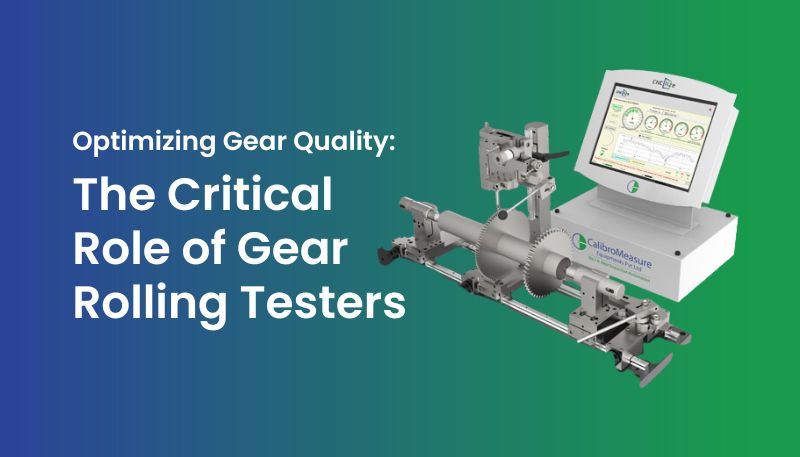Understanding the Comprehensive Gear Rolling Tester: Solution for Precision Gear Measurement
The Essence of Gear Rolling Testers
The Intricate Process of Gear Rolling Testing
The gear rolling testing process involves several intricate steps, each contributing to the overall accuracy and reliability of the results. First, the test gear and the master gear are meticulously aligned and positioned to achieve the desired center distance. This alignment is crucial as it replicates the actual operating conditions of the gear assembly.
Once the gears are appropriately positioned, they are rolled against each other, in tightly meshed condition, through a complete rotation. During this rotation, the GRT measures and records various parameters, including tooth to tooth error (TTCE) also known as TTE, double flank composite error (DFCE) also known ad TCE and PCD runout. It also helps identify the error teeth on which flickers or dents are present These measurements provide valuable insights into the gear’s performance, enabling manufacturers to identify and address any potential issues before final assembly. It also allows correction of dents and nicks.
Another great advantage of this quick inspection method is that it can throw light on the errors present in the gear cutting/finishing machine thereby allowing correction.
Diverse Applications of Gear Rolling Testers
Automotive Industry
Aerospace Industry
The aerospace industry demands the highest level of precision and reliability, making GRTs indispensable for inspecting gears used in aircraft engines, landing gear systems and other critical components. Accurate gear measurements contribute to enhanced safety, performance and longevity of aircraft components.
Power transmission industrial gearboxes
The Evolution of Gear Rolling Testers: From Manual to Automated
Manual Gear Rolling Testers
Automated Gear Rolling Testers
With the advancement of automation and computerization, automated GRTs have revolutionized gear inspection processes. These modern testers not only offer enhanced precision and accuracy but also streamline the entire testing process, reducing human error and increasing efficiency.
Automated GRTs are equipped with state-of-the-art sensors, actuators, and control systems that allow for precise control of testing parameters. They can automatically load and unload gears, adjust center distances and perform multiple tests in quick succession. This automation significantly reduces testing time while ensuring consistent and reliable results.
Moreover, automated GRTs are integrated with sophisticated software that can analyze the collected data and generate detailed reports. These reports provide manufacturers with comprehensive insights into gear performance, allowing them to make informed decisions regarding gear quality and potential improvements.
Benefits of Gear Rolling Testers
Enhanced Gear Quality:
Inspection of other CTQs:
Cost Savings:
Regulatory Compliance:
Industries such as automotive and aerospace are subject to strict regulations and standards. Gear Rolling Testers ensure compliance with these requirements by providing accurate measurements and documentation of gear performance.
Competitive Advantage:
Gear Rolling Testers have become indispensable tools for ensuring the quality and reliability of gears used in various industries. Their ability to accurately measure critical gear parameters, optimize performance, and minimize potential issues makes them invaluable for manufacturers seeking operational excellence.
As technology continues to advance, gear rolling testing will undoubtedly become even more sophisticated, enabling further improvements in gear quality and performance.


